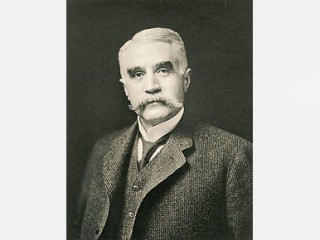
Charles Brush biography
Date of birth : 1849-03-17
Date of death : 1292-06-15
Birthplace : Euclid, Ohio, United States
Nationality : American
Category : Arhitecture and Engineering
Last modified : 2010-05-06
Credited as : street lightning, electric engineer, Arc Lamp
47 votes so far
Notable awards: Edison Medal; Rumford Prize; French Legion of Honor; Franklin Medal .
Charles F. Brush, inventor of street lighting, was raised on an Ohio farm. He borrowed his college tuition from his uncle, and completed his studies in just two years, the quicker, he said, to begin paying back the loan. He worked for several years as a chemist and iron ore salesman, but dedicated his after work hours to experimenting with electricity. In 1877 he patented an improvement to Michael Faraday's magneto-electric machine, or dynamo, which won a competition sponsored by the Franklin Institute.
He is frequently credited as the inventor of the arc lamp, but arc lights had been invented by Humphry Davy in the early 1800s. Brush is more accurately described as having perfected arc lighting, or as the inventor of the first arc lighting that was practical for manufacture. To work, an arc lamp requires a specific, unchanging gap between its electrodes, but the electric arc of illumination is created by the consumption of carbon electrodes, which shortens the electrodes' tips in a manner somewhat akin to the way a burning candle is shortened. The lamp can only work if a regulating device moves the electrodes, keeping their distance of separation between tips the same even as the tips are consumed. Brush developed a system using an electromagnet and mechanical linkage to move the upper copper-plated carbon electrode, modulated by a surprisingly simple but effective "ring clutch" mechanism, with the added ability to have multiple lamps powered by a single dynamo.
In a startling demonstration on the evening of 29 April 1879 (months before Thomas Edison's first light bulb was switched on) a dozen of Brush's arc lamps were lit at Public Square in downtown Cleveland. Reporting on this historic event, the next day's Plain Dealer newspaper said that "the light varied some in intensity at intervals, when shining brightest being so dazzling as to be painful to the eyes to look long at a lamp. In color it is of a purplish hue, not unlike moonlight, and by contrast making the gaslights in the store windows look a reddish yellow. Some people had raised their expectations too high and were disappointed because it was not as light as day but most people seemed struck with admiration, both by the novelty and brilliancy of the scene".
With months, the city had contracted to have "Brush lights" installed in Public Square and along major thoroughfares, making Cleveland the first city with street lights. In 1881 the Brush Electric Company was established, and by 1882 his lamps had been installed in several major cities across America and Europe. He became a very rich man, as Brush Electric was absorbed into Thomson-Houston Company in 1889, which merged with the Edison Electric Company in 1891 to form General Electric. For many years he owned the Cleveland Arcade, a palatial shopping and business complex, where his posted office time was half an hour daily, 12:30 - 1:00 PM.
His other noted work includes an improved storage battery (1886); the invention of the first windmill for generating electricity (1888), which was used to charge storage batteries; and physics experiments which proved that the ratio of mass-to-weight is not the same for all kinds of matter (1922), effectively correcting Galileo and rewriting the laws of gravity. He was a key financial backer of Karl von Linde, who extracted oxygen from liquid air to develop refrigeration and gas separation technologies.
Concerned that unchecked growth in world population could cause "grave economic disturbances, famines and wars [that] threaten civilization itself", he founded the Brush Foundation in 1929 to advance family planning, contraception, and reproductive health issues address. His son, Charles Brush Jr, founded Brush Engineered Materials, which remains a major manufacturer of performance engineered materials. His daughter, Edna Brush Perkins, was an artist and suffragette of some renown in her era. His grandson, Charles F. Brush III, was a noted playboy, anthropologist, and explorer.




















